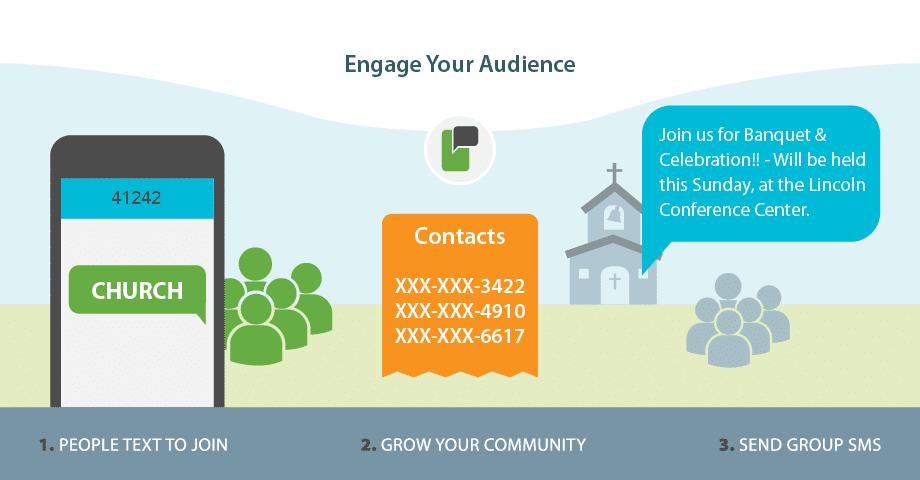Table of Contents
Are you ready to elevate your marketing strategy with SMS campaigns? Text messaging has become a powerful tool for businesses to engage customers and drive action. In fact, SMS marketing boasts higher open rates and immediate engagement compared to other digital marketing methods. But to truly succeed, you need to set up your campaign with careful planning and precision.
Here, we break down the 10 essential steps to set up a successful SMS campaign that connects with your audience, boosts engagement, and delivers measurable results.

Define Your Goals
The foundation of any marketing campaign is setting clear, measurable goals. What do you want your SMS campaign to achieve? Some common goals include driving sales, increasing website traffic, raising awareness of a new product, or boosting engagement through promotions and offers. Clearly defining your objectives upfront gives you a roadmap for success.
For instance, if your goal is to increase online sales, your SMS messages should include a discount code and direct your audience to a product page. If you want to boost foot traffic to a physical store, your message might highlight an in-store-only deal. Your goal will shape the content of your message and how you measure success.
Are you tracking click-through rates, conversion rates, or new sign-ups? Determining your goals will allow you to measure the effectiveness of your campaign later.
Moreover, having a clear purpose will keep you focused. Instead of sending generic messages, you can craft SMS campaigns that deliver value to your business and audience.
Choose the Right SMS Platform
Now that you know your goals, it’s time to choose the right SMS platform to manage your campaign. Numerous SMS platforms are available, each offering a variety of features to suit different needs. Popular options include ProTexting, Twilio, and YepText, each with its strengths.
When selecting a platform, look for features that align with your objectives. Most platforms offer essential tools like mass messaging, message scheduling, and automation, but advanced features like audience segmentation, analytics, and personalization are critical for more sophisticated campaigns.
Many platforms also offer free trials, allowing you to test the interface and features before making a final decision. Pay attention to ease of use, customer support, and integration options with your existing CRM or email marketing tools. Your platform choice will significantly affect how smoothly your campaign runs, so ensure it fits your business requirements.
Also, ensure your chosen platform complies with industry standards and regulations, such as the Telephone Consumer Protection Act (TCPA). This will protect your business from legal risks and ensure you follow the best SMS marketing practices.

Build a Quality Subscriber List
The success of any SMS campaign largely depends on the quality of your subscriber list. Unlike email marketing, where you can buy lists (although it’s not recommended), SMS marketing requires explicit consent from recipients. This means your subscribers must opt-in to receive messages. This legal requirement under TCPA ensures that your audience is genuinely interested in hearing from you.
Start by building your subscriber list through opt-in forms on your website, social media, or in-store. Offer something of value in exchange for their phone numbers, such as a discount, exclusive content, or early access to sales. The more valuable the offer, the more likely people will sign up.
Avoid purchasing lists or using non-compliant methods to grow your list, as this can harm your reputation and lead to costly legal penalties. Keep your list clean by regularly removing inactive numbers or those who opt-out. A high-quality list ensures your messages reach an engaged audience, increasing your campaign’s effectiveness.
Segment Your Audience
Segmentation is key to effective SMS marketing. Sending the same message to your entire list can lead to low engagement and high opt-out rates. Instead, break down your audience into specific groups based on buying behavior, demographics, geographic location, or how they subscribed.
For example, a retail store might segment its list into repeat customers, first-time buyers, and local shoppers. By doing this, you can tailor messages that resonate with each group. Repeat customers might receive loyalty discounts, while first-time buyers could be incentivized with a welcome offer.
Segmentation also allows for more personalized messages, which have been proven to improve engagement rates and customer satisfaction. Rather than receiving generic messages, subscribers feel the brand understands their needs and preferences, fostering a stronger connection.
Additionally, many SMS platforms simplify segmentation by offering built-in tools to organize your audience based on specific criteria. Use these features to make sure your messages are relevant and timely.
Craft a Clear and Compelling Message
Now comes the heart of the campaign: crafting the message itself. SMS messages have a strict character limit—usually 160 characters—so keeping your text concise and to the point is essential. However, you must also ensure the message is compelling enough to grab the recipient’s attention.
Start with an attention-grabbing opening. Phrases like “Limited-time offer!” or “Exclusive deal for you!” immediately signal that the message is worth reading. From there, deliver your key information quickly, including any promotion or offer you provide.
The call to action (CTA) is crucial. Every SMS message should include a clear and direct CTA that encourages the recipient to take immediate action, whether to click a link, make a purchase, or visit your store. Phrases like “Shop now” or “Redeem your code” work well in this context. Remember, the CTA should be one of the most visible parts of your message.
Creating urgency can also boost engagement. Phrases like “Offer ends soon” or “Only 3 days left” can encourage recipients to act quickly.

Include a Short URL
Since SMS messages have limited space, it is important to maximize every character. Short URLs are perfect for this. Instead of using long, unwieldy links that clutter your message, short URLs save space while still directing recipients to your landing page, product offers, or registration form.
Short URLs are especially useful if you want to track engagement. Most SMS platforms offer link-shortening tools that automatically generate short, trackable URLs. This means you can measure how many people clicked on your link, which is a valuable metric for determining the success of your campaign.
Short URLs make your message more readable and enhance your professionalism. A clean, simple link looks better in the text and reassures recipients that it’s safe to click.
Ensure Compliance
SMS marketing is heavily regulated. Non-compliance can lead to serious consequences, including hefty fines and legal action. It is essential to follow industry regulations, such as the TCPA, to avoid this. This includes ensuring you only send messages to individuals who have opted in.
In addition, every SMS message should include an easy way for recipients to opt-out, typically by replying “STOP.” Failure to provide an opt-out option can result in fines and damage to your brand’s reputation. Many SMS platforms offer automatic opt-out management, so take advantage of this feature to stay compliant.
Keep up with local regulations, especially if you’re sending messages internationally. SMS marketing laws can vary greatly between countries, so it’s important to research and follow guidelines to avoid complications.
Test Your Campaign
Before sending your SMS campaign to your entire subscriber list, it’s essential to test it first. A test ensures that your message displays correctly on different devices, links work properly, and there are no typos or mistakes in your message.
Most SMS platforms allow you to send test messages to yourself or a small group. Take the time to go through this process to avoid any embarrassing or costly errors. Double-check that your short URLs work and that the message appears exactly how you want it to.
Testing also allows you to gauge how the message will be received. Are the instructions clear? Does the call to action stand out? These questions can be answered during the testing phase, allowing you to make any necessary adjustments.

Schedule and Send
The best times to send SMS messages are typically during mid-morning or early evening when people are more likely to engage with their phones. Many SMS platforms offer scheduling tools that allow you to pre-plan your campaign and send messages at the optimal time.
You can also use A/B testing to determine the best times for your specific audience. By testing different send times, you can choose when your audience is most responsive and optimize your future campaigns.
Track and Optimize
The work isn’t over once the message is sent. Tracking and analyzing your SMS campaign’s performance is essential to understanding what worked and what didn’t. Most SMS platforms provide analytics showing metrics such as delivery, click-through, and conversion rates.
By reviewing this data, you can identify patterns and trends. For instance, you might find that certain messages performed better than others or that specific segments responded more positively to certain offers. Use these insights to refine and optimize future campaigns.
Consider tweaking your message, CTA, or timing if you notice low engagement. Continuous optimization is the key to long-term success in SMS marketing.

Final Verdict
Setting up an SMS campaign may seem complex, but following these 10 steps can streamline the process and set yourself up for success. Each step is crucial in crafting a targeted, effective campaign, from defining clear goals to tracking performance.
Whether you’re a small business owner or part of a large marketing team, these steps will help you create SMS campaigns that engage your audience and drive meaningful results. Follow this guide, and you’ll be heading to SMS marketing success soon!






